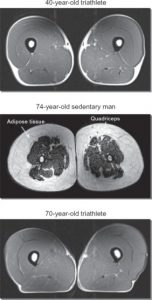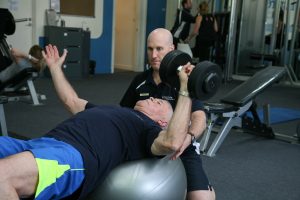Written by: Allen Howell (Accredited Exercise Physiologist)
The Australia population is ageing, and unfortunately we are also performing less physical movement. Aging is a complex process that involves many variables such as genetics, lifestyle factors and chronic diseases. These factors strongly interact which greatly influences the speed of the ageing process.
Participating in some form of physical activity on most if not all days of the week can elicit a number of beneficial responses within our body that contributes to healthy aging. Performing a structured exercise program that includes both strength and cardiovascular
Strength training
The body is designed to move, strength training is something everyone should be doing regardless of age. It is important to remember that “strength training” is anything that involves moving the body against a resistance, therefore can mean different things to everyone. After the age of 30 both muscle mass and strength has been shown to decrease by a

s much as 3% per year without performance of strength exercise (the condition of losing muscle mass is called sarcopenia). Take the following picture for example. We can see that the 70 year tri-athlete has almost the same physical amount of muscle as the 40 year old, and the sedentary 74 year old has significantly more adipose tissue (fat mass) and significantly less muscle mass. I am not suggesting that we all need to become tri-athletes in order to stay fit and healthy, however this is a great example of how we can maintain our muscle and strength as we age.The Australian guidelines suggest we should be performing strength training exercise at least twice per week, using all major muscle groups. (Source; Fitness Australia Strength Training Guidelines)
Endurance training
Our cardiovascular capacity declines naturally as we age, generally believed to decline at a rate of around 10% per decade after the age of 30. Although we originally thought that our ability to improve our cardiovascular fitness becomes diminished with age, our ability to improve is actually similar to that of a young adult. This is however dictated by our exercise intensity, obviously with light intensity exercise our ability to improve our cardiovascular fitness is minimal. Intensity is best measures using what I like to call the “talk test”. If we can talk comfortably while exercising we would consider that light intensity. If we can say only a few words without taking a breath we would consider that as moderate intensity. If we can’t speak or hold a conversation at all we would consider that to be a high/vigorous intensity of exercise.
The Australian guidelines recommend at least 2.5 hours of moderate physical activity per week, or 1.25 hours of vigorous physical activity.
It is important to understand that no matter how old you are, you should be performing some form of physical activity on almost all days of the week incorporating some form of muscular strengthening activity a couple of times if possible. We are never too old to start, and intensity of exercise is different for everyone. Finding a balance of what works for you will result in lowering disease risk and risk of future injuries, living healthier and most importantly feeling better about yourself.

Allen Howell is an Accredited Exercise Physiologist (ESSA) at Inspire Fitness for Wellbeing. If you require expert advice to unlock the health benefits of strength and endurance training – call Allen TODAY at Inspire Fitness on 9857 3007.
